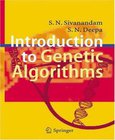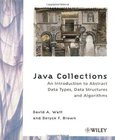An Introduction to Genetic Algorithms

Book Details:
| Publisher: | The MIT Press |
| Series: | MIT Press |
| Author: | Melanie Mitchell |
| Edition: | 1 |
| ISBN-10: | 0262133164 |
| ISBN-13: | 9780262133166 |
| Pages: | 224 |
| Published: | Feb 27 1996 |
| Posted: | Nov 19 2014 |
| Language: | English |
| Book format: | |
| Book size: | 6.2 MB |
Book Description:
Genetic algorithms have been used in science and engineering as adaptive algorithms for solving practical problems and as computational models of natural evolutionary systems. This brief, accessible introduction describes some of the most interesting research in the field and also enables readers to implement and experiment with genetic algorithms on their own. It focuses in depth on a small set of important and interesting topics- particularly in machine learning, scientific modeling, and artificial life-and reviews a broad span of research, including the work of Mitchell and her colleagues. The descriptions of applications and modeling projects stretch beyond the strict boundaries of computer science to include dynamical systems theory, game theory, molecular biology, ecology, evolutionary biology, and population genetics, underscoring the exciting general purpose nature of genetic algorithms as search methods that can be employed across disciplines. An Introduction to Genetic Algorithms is accessible to students and researchers in any scientific discipline. It includes many thought and computer exercises that build on and reinforce the reader's understanding of the text. The first chapter introduces genetic algorithms and their terminology and describes two provocative applications in detail. The second and third chapters look at the use of genetic algorithms in machine learning (computer programs, data analysis and prediction, neural networks) and in scientific models (interactions among learning, evolution, and culture; sexual selection; ecosystems; evolutionary activity). Several approaches to the theory of genetic algorithms are discussed in depth in the fourth chapter. The fifth chapter takes up implementation, and the last chapter poses some currently unanswered questions and surveys prospects for the future of evolutionary computation.
Download Link:
Related Books:
Introduction to Genetic Algorithms
This book offers a basic introduction to genetic algorithms. It provides a detailed explanation of genetic algorithm concepts and examines numerous genetic algorithm optimization problems. In addition, the book presents implementation of optimization problems using C and C++ as well as simulated solutions for genetic algorithm problems using MATLAB 7.0. It also includes application case studies on genetic algorithms in emerging fields....
An Introduction to Distributed Algorithms
An Introduction to Distributed Algorithms takes up some of the main concepts and algorithms, ranging from basic to advanced techniques and applications, that underlie the programming of distributed-memory systems such as computer networks, networks of workstations, and multiprocessors. Written from the broad perspective of distributed-memory systems in general it includes topics such as algorithms for maximum flow, program debugging, and simulation that do not appear in more orthodox texts on distributed algorithms. Moving from fundamentals to advances and applications, ten chapters-with exercises and bibliographic notes-cover a variety of topics. These include models of distributed computation, information propagation, leader election, distributed ...
Java Collections
An Introduction to Abstract Data Types, Data Structures and Algorithms
A unique, practical approach to working with collection classes in Java 2Software developers new to Java will find the practical, software-engineering based approach taken by this book extremely refreshing. With an emphasis more on software design and less on theory, Java Collections explores in detail Java 2 collection classes, helping programmers choose the best collection classes for each application they work on. Watt and Brown explore abstract data types (ADTs) that turn up again and again in software design, using them to provide context for the data structures required for their implementation and the algorithms associated with the data structures. Numerous worked examples, several large case studies, and end-of-chapter exercises are also prov...
2007 - 2021 © eBooks-IT.org



